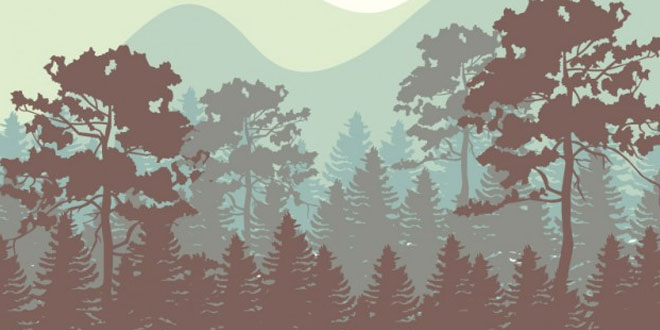NCERT 10th Class (CBSE) Social Science: Forest and wildlife resources Quiz
35 Multiple Choice Questions related to NCERT 10th Class (CBSE) Social Science: Forest and wildlife Resources Quiz:
- It is the sum total of all the varieties of species of plants, animals and microorganisms living on the earth.
- Plants of particular region or period are referred to as flora.
- Species of animals of a particular region or period are referred as fauna.
- International Union for Conservation of Nature and Natural Resources.
- Species whose population levels are considered to be normal for their survival are classified as normal species.
- Species which are found in some particular areas usually isolated by natural or geographical barriers.
Your Score:
Your Ranking:
Forest And Wildlife Resources Quiz: Chapter Summary
Biodiversity:
The variety of flora and fauna in a given geographical area is called biodiversity of that area.
Flora and Fauna in India
India is one of the world’s richest countries in terms of its vast array of biological diversity, and has nearly 8 per cent of the total number of species in the world (estimated to be 1.6 million).
| Flora & Fauna in India | |
|---|---|
| Fauna | More than 81,000 species |
| Flora | More than 47,000 species |
| Indigenous flowering plants | About 15,000 species |
| Endangered wild flora | About 10% |
| Endangered mammals | About 20% |
List of Critically Endangered Species:
Cheetah, pink-headed Duck, Mountain Quail, Forest Spotted Owl, madhucha insignis (wild mahua), hubbardia heptaneuron (a grass species)
Number of Endangered Species: 79 species of mammals, 44 of birds, 15 of reptiles, and 3 of amphibians, 1,500 plant species are considered endangered.
Classification Based on the International Union for Conservation of Nature and Natural Resources (IUCN):
- Normal Species: If the population level of species is within normal range for their survival, it is called normal species, e.g. cattle, pine, sal, rodents etc.
- Endangered Species: Species which are in danger of extinction are called endangered species, e.g. black buck, crocodile, Indian wild ass, Indian rhino, lion tailed macaque, sangai (brow anter deer in Manipur) etc.
- Vulnerable Species: If the population of a species has declined to such a level that it is likely to become endangered; it is called vulnerable species, e.g. blue sheep, Asiatic elephant, Gangetic dolphin etc.
- Rare Species: If the population of a species so small that it can become vulnerable or endangered, it is called rare species, e.g. Himalayan brown bear, wild Asiatic buffalo, desert, fox, hornbill etc.
- Endemic Species: A species which found only in a particular geographical area is called an endemic species, e.g. Andaman teal, Nicobar pigeon, Andaman wild pig, mithun in Arunachal Pradesh etc.
- Extinct Species: A species which no longer exists is called an extinct species. A species may be extinct from a local area, region, country, continent or the entire earth. Examples: Asiatic cheetah, pink head duck etc.
| Vanishing Forests | |
|---|---|
| Forest cover | 637,293 sq km (19.39% of total geographic area) |
| Dense forest | 11.48% |
| Opne forest | 7.76% |
| Mangrove | 0.15% |
Causes of Depletion of Flora and Fauna:
Agricultural Expansion: According to the Forest Survey of India, over 262,000 sq km of forest area was converted into agricultural land in India between 1951 and 1980. Moreover, a substantial part of the tribal belts has been deforested or degraded by shifting cultivation.
Enrichment Plantation: Enrichment plantation was done to promote a few favored species in many parts of India. This practice involves plantation of a single commercially valuable species. This leads to elimination of other species.
Development Projects: Large scale development projects have also contributed significantly to the loss of forests. Over 5,000 sq km of forest was cleared for river valley projects since 1951.
Mining: Mining has also caused large scale depletion of flora and fauna in many areas. For example; the ongoing dolomite mining is seriously threatening the Buxa Tiger Reserve in West Bengal.
Unequal Access to Resources: Social inequality is another major factor to depletion of flora and fauna. The rich people consume much more than the poor and thus cause a higher degree of environmental damage.
Social Effect of Resource Depletion:
In many societies, it is the women who are responsible for collection of fuel, fodder, water and other basic subsistence needs. Depletion of these resources means women need to work harder to collect those resources. At some places, women may have to walk more than 10 km to collect firewood. This causes serious health problems for women.
Deforestation induced flood and draught result in economic misery for the poor.
Deforestation also leads to loss of cultural diversity. The marginalized people who had been traditionally dependent on forest for sustenance are now forced to look for other sources of livelihood. In order to do so, they are uprooted from their traditional habitat and culture.
 Class Notes NCERT Solutions for CBSE Students
Class Notes NCERT Solutions for CBSE Students





